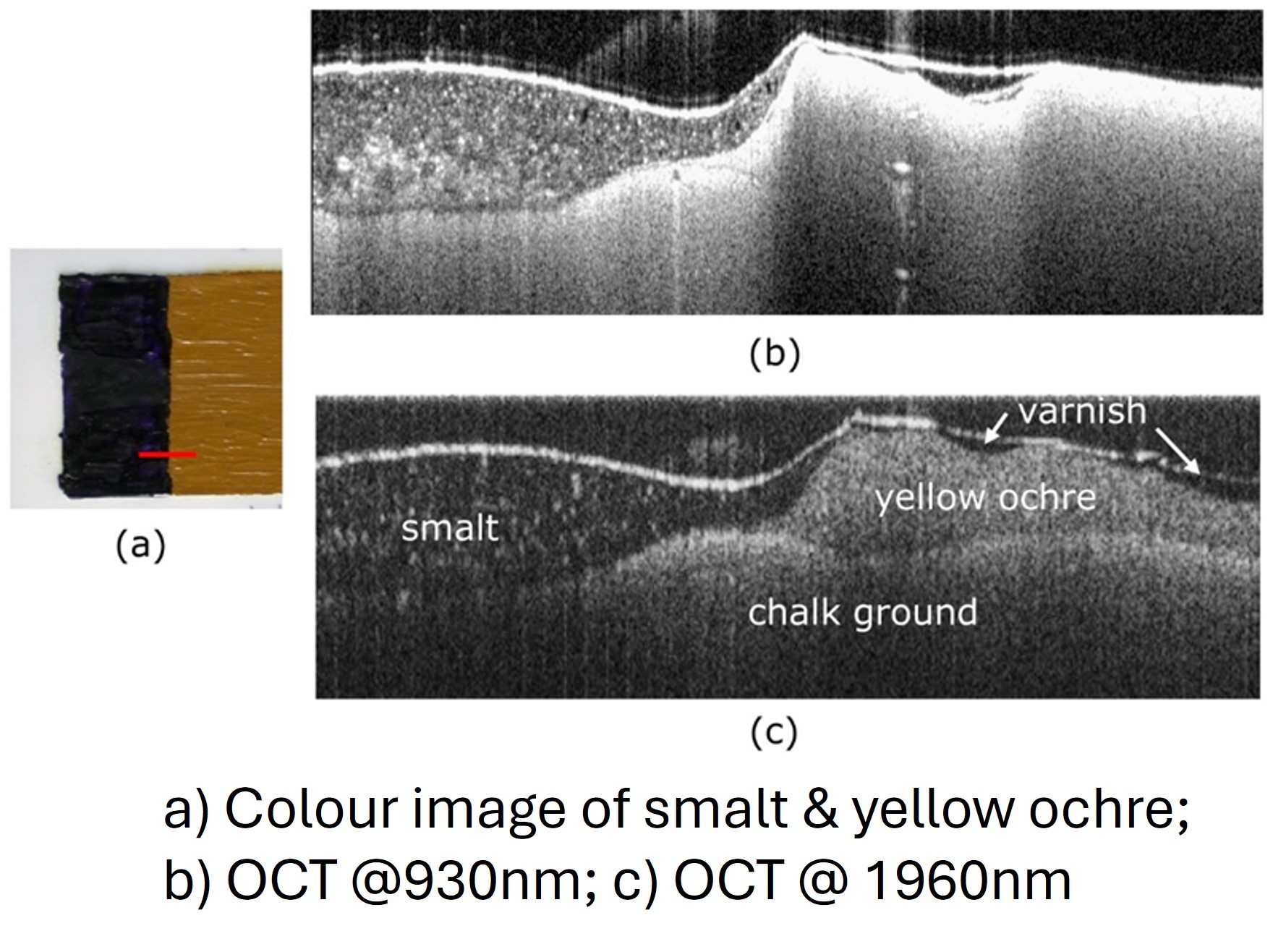Service: Long Wavelength OCT @ 1960 nm
Platforms
Fixlab
Molab
Techniques
Optical coherence tomography (oct)

Organization
United Kingdom
Service contact persons
Long Wavelength Optical Coherence Tomography (OCT) provides 2D and 3D virtual cross-sectional images in a non-invasive and non-contact way. It is suitable for the investigation of surface and subsurface translucent and transparent materials (e.g. varnishes, glass, glazes) in the short-wave infrared (central wavelength 1960 nm) with a resolution of a few microns. This OCT is optimised to provide a larger penetration depth in materials than OCTs at shorter wavelength making it more suitable to the investigation of more scattering materials such as paints and enamels.
OCT is a fast, non-invasive and efficient technique for the collection of 2D and/or 3D measurements of an objects surface, and also subsurface structures, at a resolution of a few microns. The technique requires objects to be at least semi-transparent to near infrared radiation, making it well suited to objects such as varnishes, paint glazes, some paint layers, glazes on ceramics and faience, jade, historic glass and enamels, amber, rock art, parchment and paper, etc. The 2D cross sectional images obtained by OCT are usually presented as convenient cross-sectional views, similar to microscopic images of sample cross-sections. If necessary, 3D information of an entire volume (a cube) may be collected by combining a sequence of up to 1000 cross-sections across the surface.
The major advantages of OCT are the ability to see the layers and microstructure below the object surface in a non-contact and non-invasive manner (intensity of light used for examination is in the order of a few milliwatts) and the rapid speed of data collection, with no need for object preparation. The speed of data collection and online imaging makes the technique also ideal for monitoring dynamic processes in which the stratigraphy is likely to alter, for example the monitoring of the removal, swelling and displacement of layers during conservation treatment. Given the non-invasive nature of the technique, the number of measurements across the entire surface can be unlimited, making it possible to have a representative view of the whole object.
The long wavelength OCT is optimised to provide a larger penetration depth in materials than OCTs at shorter wavelength, making it more suitable to the investigation of more scattering materials like paints and enamels. Systematic studies on the spectral transparency of historic artists' paint found that the most transparent spectral window to image pigmented layers is around 2200nm.
Fields of application
Archaeological conservation
Art history
Conservation science (cultural heritage discipline)
Heritage science (cultural heritage discipline)
Materials
ceramic glazes
Pigments
Glass
stone
metallurgical by-products
adhesives and glues
organic animal parts, binding media, glues, wood, paper, varnishes
Textiles
Other information
-
Input: High Resolution Colour images of the regions for marking the location of OCT data collection
-
Output: OCT cross-sections in adjacent, parallel locations ( file format negotiable) layer thickness surface profile maps and/ or OCT Intensity Projections of the OCT region if requested ( file format negotiable) ASCII OCT Meta Data if requested Collection Region Markup Image and representative images are included in the MAPSI app

